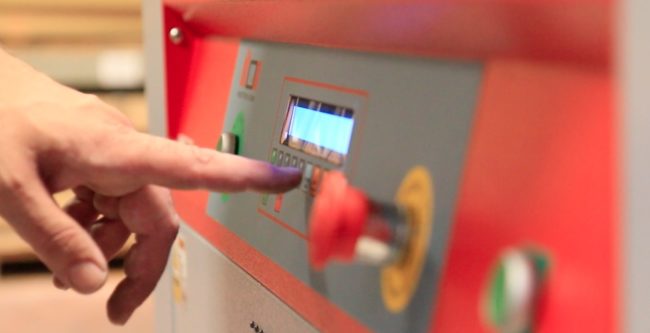No matter what kind of plates you work with – water-based, solvent-based, for UV printing. Today I’m going to tell you about the 4 signs that every printer must look for when they have to choose a new photopolymer plate processor.
I wrote this brief after countless calls from printers who had already tried everything and were desperate to solve the many problems of their processors. Everytime I came home from these visits, I used to think about just how much time, money and material all these printers could have saved if only someone had told them what to pay attention to when buying their new processor. When suddenly I realized that I could be that someone.
These tips will save you from buying the wrong machine, so be sure to write them down where you can’t fail to see them – on a post-it, on an Outlook note, on your agenda or on your smartphone.
Commit them to memory if you like, just keep them in mind when you’ll be called to spot the one plate processor among the many that really suits you.
Sign 1 – ELECTRONIC CONTROLS AND LAMPS
If you currently work with an old-fashioned processor, it must have occurred to you to start production when the machine is not ready, i.e. when the lamps are still too cold for a proper exposure. In order to avoid this risk, the most advanced processors now available on the market are equipped with a special configuration with all electronic controls. Thanks to this, you will be able to monitor the temperature and conditions of your lamps. With indicators of functioning, temperature, regulations and an acoustic signal beeping at the end of the process, you’ll finally be able to work with unprecedented precision.
Sign 2 – PERFECT VACUUM
As you know, the vacuum is a very delicate but crucial step in the process. Just a little difformity and the difference is made between a good job and a job that needs to be done again. The irony is that with most processors you have to wait until the end of the process to find out. So if you are about to change processor, pay close attention to the characteristics of the vacuum! How do you know if the machine you’re looking at is designed to produce a perfect vacuum? First of all, look for this sign: tiny channels that facilitate the complete expulsion of air bubbles. Another important hint is the thickness. Make sure that the vacuum is not too thin, because this would make it more delicate and interfere with air suction. But if you really want to get the best of the best, be informed that some processors go as far as to signal to you if the vacuum is not spread properly. You’ll no longer hold your breath for the whole duration of the process, waiting to find out if you’ve made it or if, once again, you’ll have to bin everything and start from scratch. Any wastes? Completely ELIMINATED.
Sign 3 – BRUSHES
If you produce plates of different thicknesses, you definitely know what it means to manually dismount and set the brush tray. A g o n y. You loosen a screw on one side, a screw on the other, but the two sides are never perfectly parallel at first attempt. On one side the brushes touch the panel, on the other they don’t. And on you go with the screwdriver like there’s no tomorrow.
Some processors feature automatic thickness regulation. All you have to do is push a button and the correct thickness of the plate will be set automatically. That’s a whole new world, I assure you.
Sign 4 – AUTOMATIC OPENING
In modern companies, operators in charge of pre-press often need to leave the processor to run to the press, or have to work a long time on the computer. If you are the one who runs to and fro from the production area you know what I’m talking about. If your responsibilities reach out to the whole company, you have a different kind of concern: will my operator remember to make sure the plates don’t soak at the end of the washing?? In both cases, there exists a processor that allow you to completely avoid the risk of damaging the plates by leaving them to long into the washing water. This is achieved thanks to the automatic opening optional, that makes the lid lift automatically at the end of the washing cycle, saving plates from accidental brining. That’s a nice weight off your chest, right?
Now you may be thinking: you don’t need automatic opening with inline machines, because the plates come out automatically. Right, let’s go deeper into this, shall we. Plates do indeed come automatically out of inline machines at the end of the washing, but how long does it take for them to do so? How much space do these machines take up?
And if you want to optimize your production by inserting one plate behind the other, you’ll still have to stand by for the whole duration of the process… so what’s the point? Inline machines usually come in handy if you work with very big sizes that are difficult to handle, like 90×120 or 80×100. If that’s not the case for you, I suggest you think about it carefully before you buy one.
You may not realize it now, but the information I’ve just shared with you is going to be your best ally when you have to choose a new processor. If you focus on these 4 signs you’ll immediately be able to spot the most advanced machines, avoiding the risk of going back home with an old piece of technology that will make you sweat blood because of its limits.
Should you wish to go deeper into this topic or have specific questions, please do not hesitate to write to me at customercare@ditom.it!

